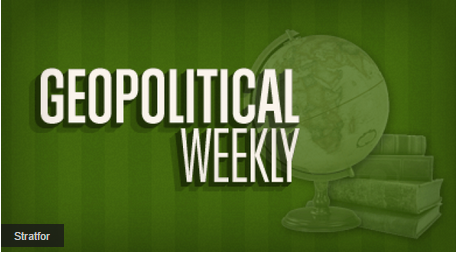Last week, I wrote about the crisis of Islamic radicalism and the problem of European nationalism. This week’s events give me the opportunity to address the question of European nationalism again, this time from the standpoint of the European Union and the European Central Bank, using a term that only an economist could invent: “quantitative easing.”
European media has been flooded for the past week with leaks about the European Central Bank’s forthcoming plan to stimulate the faltering European economy by implementing quantitative easing. First carried by Der Spiegel and then picked up by other media, the story has not been denied by anyone at the bank nor any senior European official. We can therefore call this an official leak, because it lets everyone know what is coming before an official announcement is made later in the week.

The plan is an attempt to spur economic activity in Europe by increasing the amount of money available. It calls for governments to increase their borrowing for various projects designed to increase growth and decrease unemployment. Rather than selling the bonds on the open market, a move that would trigger a rise in interest rates, the bonds are sold to the central banks of eurozone member states, which have the ability to print new money. The money is then sent to the treasury. With more money flowing through the system, recessions driven by a lack of capital are relieved. This is why the measure is called quantitative easing.
The United States did this in 2008. In addition to government debt, the Federal Reserve also bought corporate debt. The hyperinflation that some had feared would result from the move never materialized, and the U.S. economy hit a 5 percent growth rate in the third quarter of last year. The Europeans chose not to pursue this route, and as a result, the European economy is, at best, languishing. Now the Europeans will begin such a program — several years after the Americans did — in the hopes of moving things forward again.
The European strategy is vitally different, however. The Federal Reserve printed the money and bought the cash. The European Central Bank will also print the money, but each eurozone country’s individual national bank will do the purchasing, and each will be allowed only to buy the debt of its own government. The reason for this decision reveals much about Europe’s real crisis, which is not so much economic (although it is certainly economic) as it is political and social — and ultimately cultural and moral.
The recent leaks have made it clear the European Central Bank is implementing quantitative easing in this way because many eurozone governments are unable to pay their sovereign debt. European countries do not want to cover each other’s shortfalls, either directly or by exposing the central bank to losses, a move that would make all members liable. In particular, Berlin does not want to be in a position where a series of defaults could cripple Europe as a whole and therefore cripple Germany. This is why the country has resisted quantitative easing, even in the face of depressions in Southern Europe, recessions elsewhere and contractions in demand for German products that have driven German economic growth downward. Berlin preferred those outcomes to the risk of becoming liable for the defaults of other countries.

